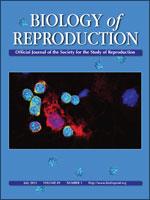Artificial insemination (AI) in cats traditionally uses equine chorionic gonadotropin (eCG) and human chorionic gonadotropin (hCG) to induce follicular development and ovulation, with subsequent bilateral laparoscopic intrauterine insemination. However, long-acting hCG generates undesirable secondary ovulations in cats. Uterine AI also requires relatively high numbers of spermatozoa for fertilization (∼8 × 106 sperm), and unfortunately, sperm recovery from felids is frequently poor. Using short-acting porcine luteinizing hormone (pLH) instead of hCG, and using the oviduct as the site of sperm deposition, could improve fertilization success while requiring fewer spermatozoa. Our objectives were to compare pregnancy and fertilization success between 1) uterine and oviductal inseminations and 2) eCG/hCG and eCG/pLH regimens in domestic cats. Sixteen females received either eCG (100 IU)/hCG (75 IU) or eCG (100 IU)/pLH (1000 IU). All females ovulated and were inseminated in one uterine horn and the contralateral oviduct using fresh semen (1 × 106 motile sperm/site) from a different male for each site. Pregnant females (11/16; 69%) were spayed approximately 20 days post-AI, and fetal paternity was genetically determined. The number of corpora lutea (CL) at AI was similar between hormone regimens, but hCG increased the number of CL at 20 days post-AI. Numbers of pregnancies and normal fetuses were similar between regimens. Implantation abnormalities were observed in the hCG group only. Finally, oviductal AI produced more fetuses than uterine AI. In summary, laparoscopic oviductal AI with low sperm numbers in eCG/hCG- or eCG/pLH-treated females resulted in high pregnancy and fertilization percentages in domestic cats. Our subsequent successes with oviductal AI in eCG/pLH-treated nondomestic felids to produce healthy offspring supports cross-species applicability.
How to translate text using browser tools
22 May 2013
Laparoscopic Oviductal Artificial Insemination Improves Pregnancy Success in Exogenous Gonadotropin-Treated Domestic Cats as a Model for Endangered Felids
Valéria A. Conforti,
Helen L. Bateman,
Mandi W. Schook,
Jackie Newsom,
Leslie A. Lyons,
Robert A. Grahn,
James A. Deddens,
William F. Swanson
ACCESS THE FULL ARTICLE

Biology of Reproduction
Vol. 89 • No. 1
July 2013
Vol. 89 • No. 1
July 2013
Artificial insemination
ECG
exogenous gonadotropins
Feline
hCG
laparoscopy
oviductal insemination




